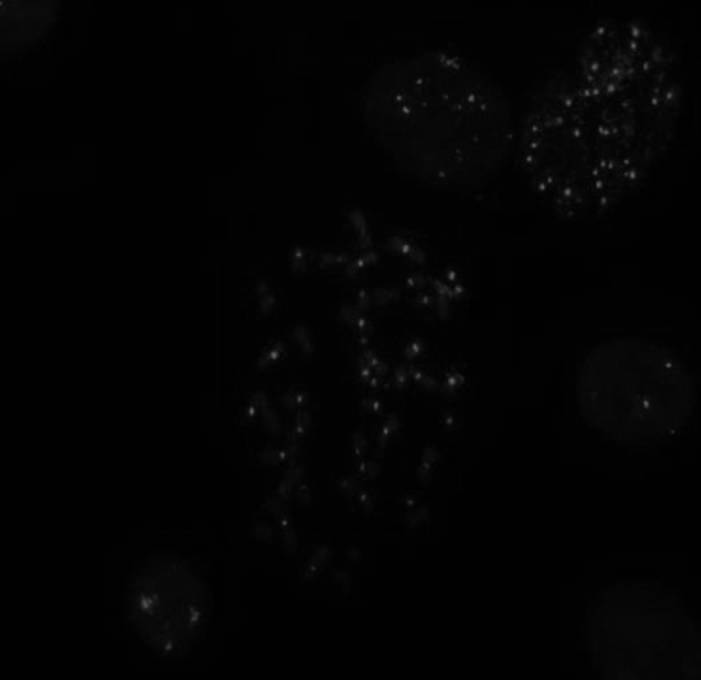A Method of Using Digoxigenin-labeled Oligonucleotide Centromere Probes for In Situ Hybridization
A technology of digoxigenin labeling and oligonucleotide, applied in the field of molecular biology nucleic acid labeling, can solve the problems of many failures and complicated steps.
- Summary
- Abstract
- Description
- Claims
- Application Information
AI Technical Summary
Problems solved by technology
Method used
Image
Examples
Embodiment Construction
[0014] 1. The preparation process of the probe labeling solution:
[0015] A Solution: 0.2mol / L NaHCO 3 (pH8.7)
[0016] First prepare 0.1mol / L Na 2 CO 3 Solution: Weigh 5.3g of sodium carbonate powder with an analytical balance, add 500ml of water, stir and dissolve with a glass rod. Weigh 8.4g of sodium bicarbonate powder with an analytical balance, and add 500ml of medical physiological water for injection. Stir with a glass rod to dissolve. Then add 10-30ml 0.1mol / L Na 2 CO 3 solution to adjust its pH to about 8.8.
[0017] Solution: 3mol / L sodium acetate solution (pH5.5)
[0018] Weigh 4.0 g of sodium acetate trihydrate powder with an analytical balance, and then add 8 ml of distilled water. Stir with a glass rod to dissolve. Then add 1ml of glacial acetic acid. Mix well. Check the pH with pH paper. The pH was adjusted to 5.5 by adding glacial acetic acid drop by drop. Finally add water to make up to 10ml.
[0019] , Digoxigenin probe labeling oper...
PUM
 Login to View More
Login to View More Abstract
Description
Claims
Application Information
 Login to View More
Login to View More - R&D
- Intellectual Property
- Life Sciences
- Materials
- Tech Scout
- Unparalleled Data Quality
- Higher Quality Content
- 60% Fewer Hallucinations
Browse by: Latest US Patents, China's latest patents, Technical Efficacy Thesaurus, Application Domain, Technology Topic, Popular Technical Reports.
© 2025 PatSnap. All rights reserved.Legal|Privacy policy|Modern Slavery Act Transparency Statement|Sitemap|About US| Contact US: help@patsnap.com

